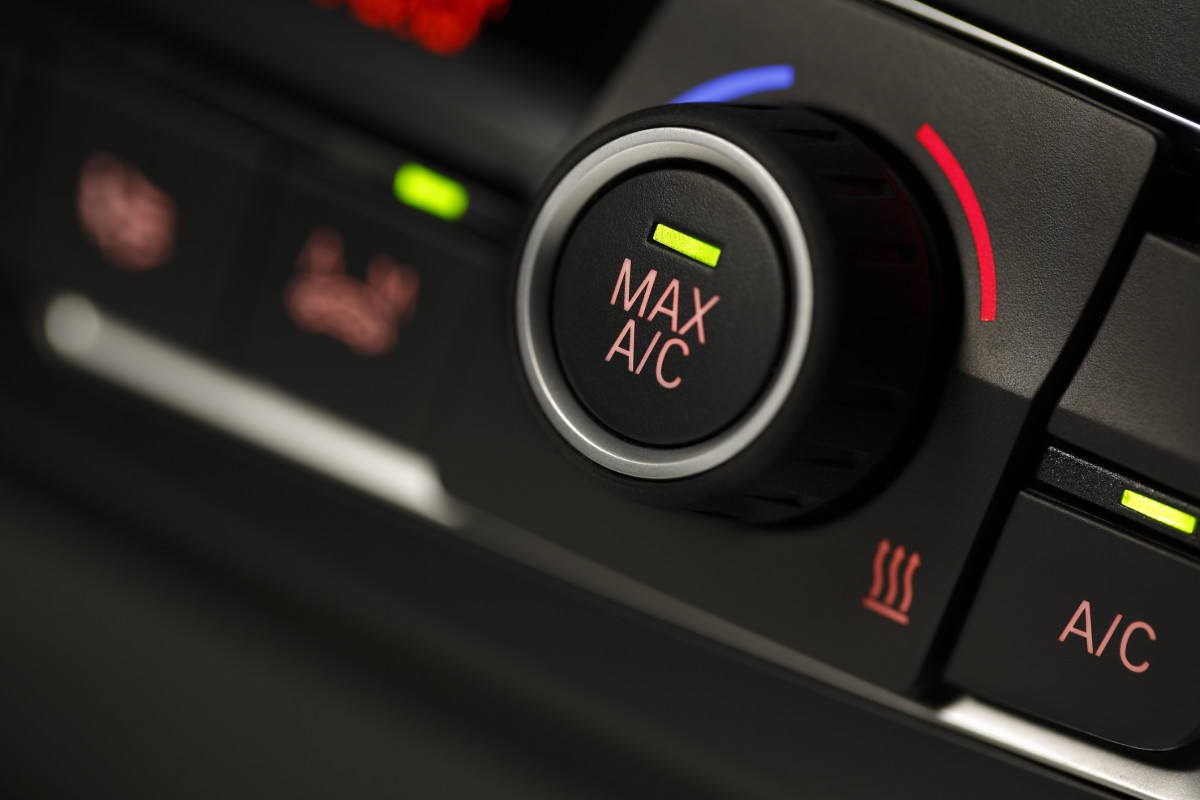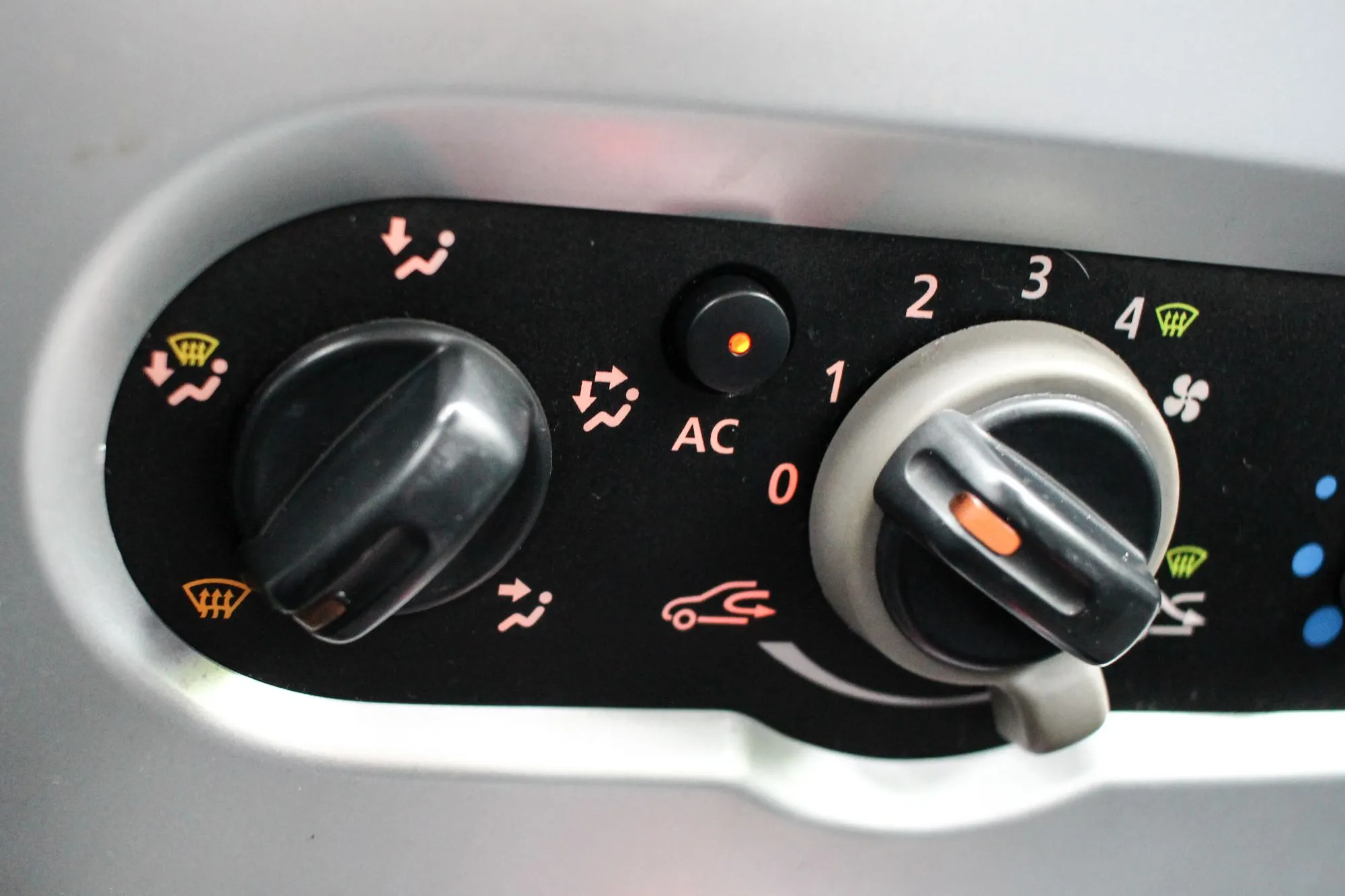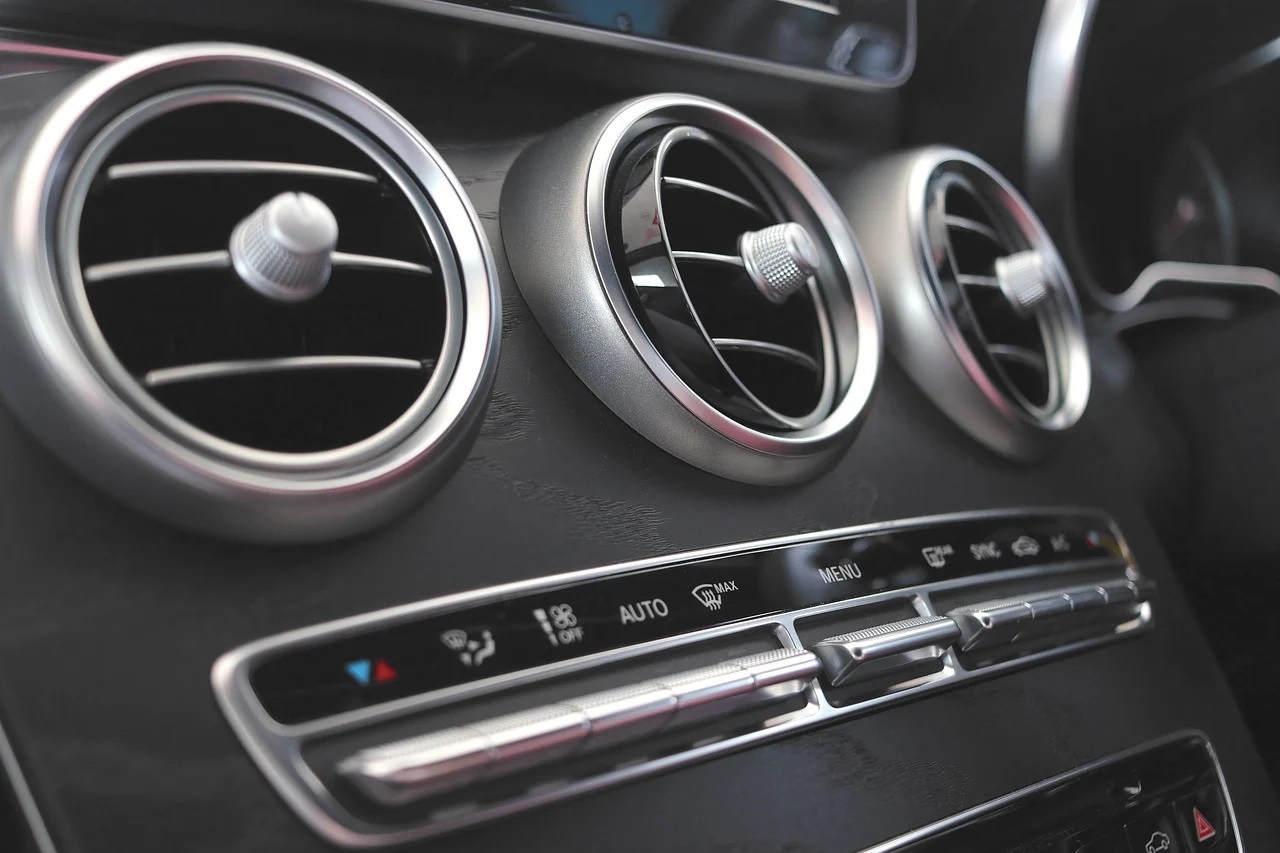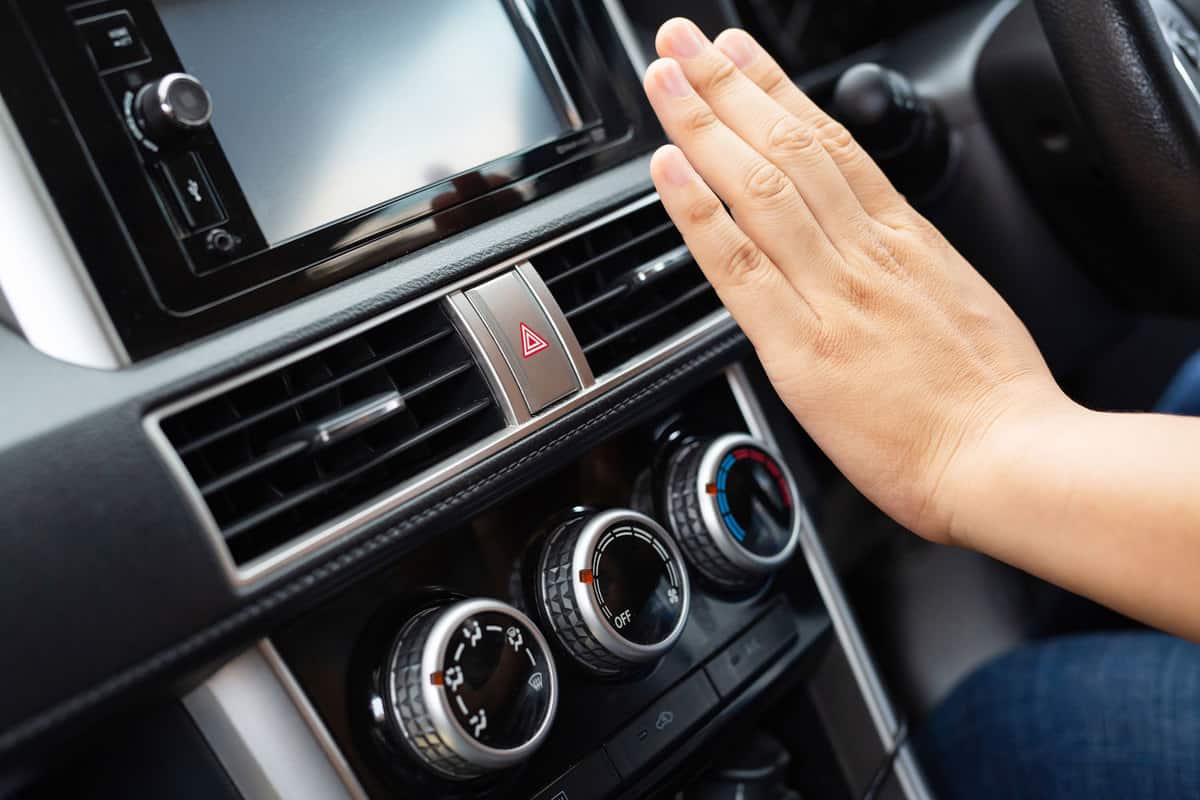

Articles
What Does The AC Button Do In A Car
Modified: September 2, 2024
Discover the function of the AC button in your car with our informative articles. Stay cool and comfortable on your journeys.
(Many of the links in this article redirect to a specific reviewed product. Your purchase of these products through affiliate links helps to generate commission for Storables.com, at no extra cost. Learn more)
Introduction
The AC button in a car is a familiar sight to anyone who has driven a vehicle. But have you ever wondered what exactly this button does? Well, wonder no more! In this article, we will explore the function of the AC button in a car and how it helps to regulate the temperature and comfort levels inside the vehicle.
When you step into a car on a hot summer day or a chilly winter morning, the first thing you might do is reach for the AC button. This seemingly simple button plays a vital role in creating a pleasant driving experience by controlling the airflow and temperature inside the car’s cabin. It allows you to adjust the settings to your desired level of comfort.
The AC button, which stands for air conditioning, enables you to regulate the temperature, fan speed, and airflow direction within the vehicle. Whether you want to cool down on a scorching day, defrost your windows on a frosty morning, or simply circulate the air inside the cabin, the AC button is your go-to tool.
In the following sections, we will delve deeper into the different modes and functions of the AC button in a car. So sit back, relax, and let’s explore how this simple button can make your driving experience more comfortable and enjoyable.
Key Takeaways:
- The AC button in a car is a versatile tool that provides cooling, air circulation, and defrosting capabilities, allowing drivers to create a customized and comfortable climate inside the vehicle.
- Troubleshooting common issues with the AC system, such as unresponsive buttons, poor cooling performance, unpleasant odors, and strange noises, can help ensure optimal functionality and a pleasant driving experience.
Read more: What Does An AC Condenser Do In A Car
Function of the AC Button
The AC button in a car serves multiple functions to ensure a comfortable and pleasant driving experience. Let’s take a closer look at its main functions and how they work.
Cooling Mode: One of the primary functions of the AC button is to cool down the interior of the car on hot days. When you press the AC button, it activates the air conditioning system, which cools down the air before blowing it into the cabin. The AC system works by removing heat and moisture from the air through a process called refrigeration. This process involves a compressor, condenser, evaporator, and expansion valve working together to regulate the temperature. The cooling mode is especially useful during the summer months when temperatures can soar.
Air Circulation Mode: In addition to cooling, the AC button also allows you to circulate the air inside the cabin. When the AC system is activated, it pulls in the outside air and circulates it throughout the car. This mode helps to eliminate stale air, odors, and humidity that may be present inside the vehicle. It can be particularly useful when driving in areas with poor air quality, such as heavily congested urban areas or areas with high levels of pollution.
Defrost Mode: Another important function of the AC button is to defrost the windows in cold weather conditions. When you turn on the defrost mode, the AC system directs warm air towards the windshield and side windows, helping to melt any ice or frost that may have formed. This mode is essential for maintaining clear visibility while driving in winter conditions, preventing fogging and ice buildup on the windows.
These are the main functions of the AC button in a car. By allowing you to control the temperature, air circulation, and defrosting capabilities, it ensures a comfortable and safe driving environment regardless of the weather conditions outside.
In the next sections, we will explore how you can adjust the temperature and fan speed using the AC button, as well as some troubleshooting tips if you’re experiencing issues with your AC system.
Cooling Mode
Cooling mode is an essential function of the AC button in a car, especially during hot summer days. When you activate the cooling mode, the air conditioning system kicks in to lower the temperature inside the cabin, providing a cool and comfortable environment for the driver and passengers.
Once the cooling mode is activated, the AC system starts by compressing a refrigerant gas. This compresses the molecules in the gas, creating heat. The compressed gas then moves to the condenser, located in the front of the car, where it releases heat and changes into a high-pressure liquid.
The high-pressure liquid then flows through the evaporator, located inside the car’s cabin. As it passes through the evaporator, the liquid expands, causing it to cool down significantly. This chilled liquid absorbs heat from the surrounding air, effectively cooling it down.
Once the air has been cooled, the system uses a fan to blow the chilled air into the cabin, creating a refreshing and cool atmosphere. The cool air flows through the air vents and circulates inside the car, providing relief from the sweltering heat outside.
The cooling mode can be adjusted using the AC controls in the car. You can set the desired temperature using the temperature control buttons, allowing you to customize the level of cooling based on your preference. Some cars also offer dual-zone climate control, allowing the driver and front passenger to set different temperatures for their respective sides of the vehicle.
It’s important to note that while the cooling mode can provide relief from hot temperatures, it’s recommended to set the AC at a moderate level to avoid excessive energy consumption and to prevent sudden temperature changes that may cause discomfort. Additionally, using the AC system responsibly can help conserve fuel and reduce environmental impact.
Now that we understand the cooling mode, let’s explore the next function of the AC button – the air circulation mode, which helps keep the air inside the cabin fresh and breathable.
Air Circulation Mode
Air circulation mode is another important function of the AC button in a car. Activating this mode allows the vehicle to circulate fresh air from the outside or recirculate the air already present inside the cabin. This helps to maintain a pleasant and breathable atmosphere, especially in areas with poor air quality or unpleasant odors.
When the air circulation mode is set to fresh air, the AC system pulls air from the outside and directs it into the cabin. This mode is particularly useful when driving through areas with clean and fresh air, such as rural or suburban areas. It helps to bring in fresh air and create a comfortable driving environment.
On the other hand, when the air circulation mode is set to recirculate, the AC system uses the air already present inside the cabin. This mode is beneficial in situations where the outside air quality is poor, such as when passing through areas with heavy traffic or construction work. It prevents external pollutants and unpleasant odors from entering the cabin, allowing you to breathe cleaner air.
Many cars feature a cabin air filter that helps to further improve the air quality inside the vehicle. The cabin air filter traps dust, pollen, and other airborne particles, ensuring that the air circulating inside the cabin is as clean as possible. Regular maintenance and replacement of the cabin air filter are necessary to maintain optimal filtration efficiency.
To switch between fresh air and recirculation mode, most cars have a button labeled “Recirculation” or “Fresh Air.” Pressing this button toggles between the two modes. Some vehicles also have an automatic air circulation setting that adjusts based on the outside air quality and temperature.
It’s important to note that while recirculation mode can be useful in certain situations, it should not be used for an extended period, particularly with a large number of occupants in the vehicle. Continuous recirculation of air can lead to a decrease in oxygen levels inside the cabin and may cause drowsiness or discomfort.
Now that we understand the air circulation mode, let’s explore another crucial function of the AC button – the defrost mode.
Defrost Mode
The defrost mode is a vital function of the AC button in a car, especially during colder months or in regions with icy or frosty conditions. This mode helps clear fog and frost from the windshield and side windows, ensuring clear visibility for safe driving.
When the defrost mode is activated, the AC system directs warm air towards the windshield and side windows. The warm air helps to melt any frost or ice that may have accumulated on the glass surfaces. Simultaneously, the AC system removes moisture from the air, preventing fogging on the windows.
The warm air is generated by the heating system of the car, which utilizes engine heat to warm up the cabin. The AC system then redistributes the warm air to the windshield and windows to speed up the defrosting process.
Most cars have a dedicated button or setting for the defrost mode, typically labeled with a symbol representing a windshield with wavy lines. Some vehicles also have separate buttons or settings for the front and rear defrosters, allowing you to defog both the windshield and the rear window.
It’s important to note that the defrost mode may not be as effective if the AC system is not running at optimal performance. Regular maintenance, such as checking the refrigerant level and ensuring that the AC components are clean and in good condition, is crucial to ensure proper functioning in defrost mode.
In addition to activating the defrost mode, it’s also beneficial to clear any snow or ice from the exterior of the vehicle before driving. This helps prevent the formation of new frost or ice on the windshield and windows while on the road.
Remember, clear visibility is essential for safe driving. Utilizing the defrost mode in combination with proper vehicle maintenance and good driving practices will help ensure a clear and unobstructed view of the road ahead.
Now that we’ve explored the defrost mode, let’s move on to understanding how the AC button allows you to adjust the temperature and fan speed for maximum comfort while driving.
The AC button in a car activates the air conditioning system, which cools and dehumidifies the air inside the vehicle. It’s useful for maintaining a comfortable temperature, especially during hot weather.
Read more: What Does The Button On A Smoke Detector Do?
Adjusting Temperature
The AC button in a car not only provides cooling, air circulation, and defrosting capabilities, but it also gives you control over the temperature inside the cabin. This allows you to tailor the climate to your desired level of comfort, regardless of the weather conditions outside.
Most cars have temperature control buttons or knobs that allow you to adjust the desired temperature. These buttons typically have a range from cool to warm, with several intermediate settings in between. Some vehicles may even have dual-zone climate control, which allows the driver and front passenger to set different temperatures for their respective sides of the vehicle.
To adjust the temperature, you’ll usually find two buttons or dials labeled with temperature symbols or icons. One button or dial usually has a blue color or a snowflake symbol, indicating cooler temperatures, while the other button or dial has a red color or a sun symbol, indicating warmer temperatures.
To decrease the temperature inside the cabin, you would typically press the button or turn the dial marked with the blue or snowflake symbol. This will lower the temperature and provide a cooling effect through the AC system. Conversely, pressing the button or turning the dial marked with the red or sun symbol will increase the temperature and provide a warming effect through the heating system.
It’s important to note that adjusting the temperature may take some time to have an effect, especially if you’re changing from extreme hot to cold or vice versa. The AC system and heating system need a few moments to adjust and regulate the airflow and temperature to reach the desired level.
Remember, it’s recommended to set the temperature at a comfortable level, avoiding extreme temperature changes that may cause discomfort or affect your concentration while driving. Moreover, setting the temperature at a moderate level can help conserve energy and improve fuel efficiency.
Now that we have explored how to adjust the temperature, let’s move on to understanding how the AC button allows you to adjust the fan speed for optimal airflow and comfort while driving.
Adjusting Fan Speed
In addition to controlling temperature, the AC button in a car also allows you to adjust the fan speed, regulating the airflow inside the cabin. By adjusting the fan speed, you can create a comfortable environment based on your preference, whether you want a gentle breeze or a more powerful airflow.
Most cars have fan speed control buttons or knobs that allow you to increase or decrease the speed of the blower fan. These buttons or knobs typically have multiple settings, ranging from low to high, with intermediate speeds in between. Some vehicles may also have an “Auto” setting, where the fan speed is automatically adjusted based on the set temperature.
To increase the fan speed, you would typically press the button or turn the knob toward the higher speed settings. This will result in a stronger airflow inside the cabin, providing more intense cooling or heating, depending on your temperature settings. Conversely, pressing the button or turning the knob toward the lower speed settings will decrease the fan speed, providing a gentler airflow.
Adjusting the fan speed can also help distribute the conditioned air more evenly throughout the cabin. For example, if you’re seated in the rear of the vehicle and want more air to reach you, you can increase the fan speed to enhance the airflow to the back seats.
It’s important to find a fan speed that is comfortable for you and your passengers. While higher fan speeds may provide faster cooling or heating, they can also create a noisier environment. Lower fan speeds, on the other hand, may result in a quieter interior but may take longer to achieve the desired temperature.
Remember, finding the right balance between temperature and fan speed will help create a comfortable environment for your drive, whether it’s a hot summer day or a chilly winter morning.
Now that we’ve covered how to adjust the fan speed, let’s move on to troubleshooting tips if you’re experiencing issues with the AC button or air conditioning system.
AC Button Troubleshooting
While the AC button in a car is designed to provide comfort and convenience, there may be instances where you encounter issues with its functionality. Here are some troubleshooting tips to help you address common problems you may encounter with the AC button or the overall air conditioning system in your car.
No Response when Pressing the AC Button: If the AC button does not respond when pressed, the first thing to check is the fuse related to the AC system. A blown fuse can prevent the AC button from functioning correctly. Consult your car’s manual to locate the fuse box and check the AC-related fuses. If you find a blown fuse, replace it with a new one of the same rating. If the issue persists, it may indicate a larger problem with the electrical system or the AC control module, and it’s best to seek professional assistance.
Poor Cooling Performance: If you find that the air conditioning system is not cooling the interior of your car effectively, there could be several causes. One common issue is a low refrigerant level. The refrigerant is responsible for cooling the air, and if it’s too low, the AC system won’t perform optimally. Visit a professional mechanic or AC specialist to check and recharge the refrigerant if needed. Additionally, it’s essential to clean or replace the cabin air filter regularly to maintain proper airflow.
Unpleasant Odors: If you notice unpleasant smells coming from the air vents when the AC system is running, it may indicate a dirty or moldy evaporator. The evaporator can accumulate moisture and become a breeding ground for bacteria and mold if not maintained properly. It’s recommended to have the evaporator cleaned and treated with an antibacterial solution by a professional to eliminate the odors.
Strange Noises: Unusual noises, such as rattling or squealing, coming from the AC system can indicate a problem. It could be an issue with a loose or damaged fan belt, a malfunctioning blower motor, or something blocking the air ducts. It’s best to have these issues diagnosed and repaired by a professional to prevent further damage to the AC system.
The above troubleshooting tips cover some common issues, but it’s important to note that more complex AC system problems may require the expertise of a qualified technician. If you’re unsure or unable to address the issue yourself, it’s always best to consult a professional for assistance.
Now that we’ve covered troubleshooting tips, let’s wrap up our discussion on the AC button and its importance in creating a comfortable driving experience.
Conclusion
The AC button in a car is a simple yet indispensable feature that plays a significant role in creating a comfortable and enjoyable driving experience. From cooling down on scorching summer days to defrosting windows during winter mornings, the AC button provides essential functions to regulate the temperature and airflow inside the cabin.
By activating the cooling mode, the AC system cools down the air through a process of refrigeration, providing relief from hot temperatures. The air circulation mode helps to maintain a fresh and breathable environment by either bringing in fresh air from the outside or recirculating clean air from within the car. The defrost mode clears fog and frost from windows, ensuring clear visibility while driving in cold weather conditions.
With the ability to adjust the temperature and fan speed, the AC button allows drivers and passengers to create a customized climate inside the vehicle. Whether you prefer a cool breeze on a hot summer day or a gentle warm airflow during the winter, the AC button gives you control over your comfort.
However, it’s crucial to be aware of potential issues that may arise with the AC system. Troubleshooting common problems, such as unresponsive AC buttons, poor cooling performance, unpleasant odors, or strange noises, can help ensure the AC system functions optimally.
For complex issues or concerns, it’s wise to consult a professional who can diagnose and repair any faults in the AC system. Regular maintenance, including cleaning or replacing cabin air filters and checking refrigerant levels, is also essential for the smooth operation of the AC system.
In conclusion, the AC button in a car is not just a simple button, but a gateway to comfort and convenience. It allows us to find respite from extreme temperatures, improve air quality, and ensure clear visibility. So the next time you reach for the AC button, remember the vital role it plays in making your driving experience more enjoyable.
Now that you're well-versed with the AC button's role in keeping your car cool and functioning properly, why stop there? Dive deeper into vehicle maintenance with our latest piece on ensuring your air conditioning system works like new. Whether tackling minor hiccups or major fixes, this guide on AC repair offers handy tips and expert advice.
Frequently Asked Questions about What Does The AC Button Do In A Car
Was this page helpful?
At Storables.com, we guarantee accurate and reliable information. Our content, validated by Expert Board Contributors, is crafted following stringent Editorial Policies. We're committed to providing you with well-researched, expert-backed insights for all your informational needs.















0 thoughts on “What Does The AC Button Do In A Car”